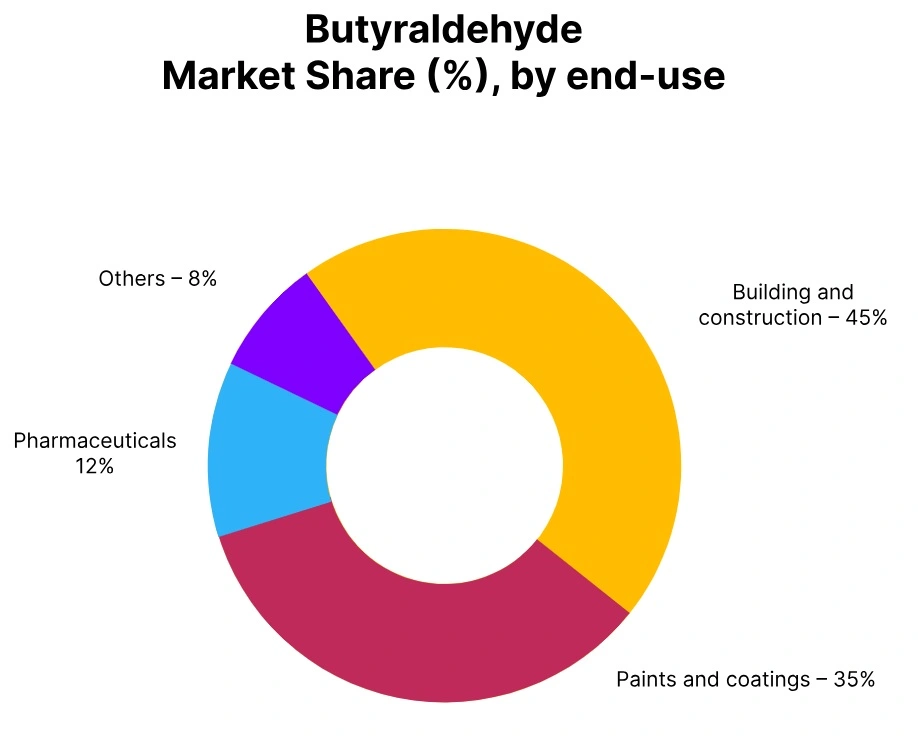Price-Watch’s most active coverage of Butyraldehyde price assessment:
- 98.5% min Industrial Grade FOB Hamburg, Germany
- 98.5% min Industrial Grade FD Rotterdam, Netherlands
- 98.5% min Industrial Grade CIF Mersin_Germany, Turkey
- 98.5% min Industrial Grade CIF_Chittagong_Germany, Bangladesh
- 98.5% min Industrial Grade CIF Nhava Sheva_Germany, India
Butyraldehyde Price Trend Q3 2025
In Q3 2025, Butyraldehyde prices across Germany, the Netherlands, Turkey, Bangladesh, and India showed slight declines amid balanced supply and steady feedstock costs. Weak demand from downstream industries such as plasticizers, coatings, and resins curbed further gains. Overall, market activity remained stable with marginal softening in export and import pricing across major trading hubs.
Germany
Butyraldehyde Export Prices FOB Hamburg, Germany, Grade 98.5 min Industrial Grade.
In Q3 2025, Butyraldehyde prices in Germany observed slight downward movement amid softening demand from coatings and plastics industries. Butyraldehyde price trend in Germany reflected marginal declines driven by reduced export volumes and weak construction chemical requirements. Domestic producers focused on adjusting production rates to reduce inventory buildup.
According to PriceWatch, product prices in Q3 for Butyraldehyde showed a percentage decrease compared to the previous quarter. The market balance was influenced by declining raw material propylene costs and weakening consumer activity in Europe. Product prices in Q3 stayed modest due to lower downstream offtakes. In Germany, Butyraldehyde prices in September 2025 remained steady despite minor pressure from international buyers.
Netherlands
Butyraldehyde Domestic Prices FD Rotterdam, Netherlands, Grade 98.5 min Industrial Grade.
In Q3 2025, Butyraldehyde prices in the Netherlands displayed slight downward resilience due to steady local consumption and moderate inventory buildup. Butyraldehyde price trend in Netherlands suggested price stability supported by consistent industrial solvent demand. Domestic producers maintained cautious operating rates amid limited export opportunities. Product prices in Q3 were sustained by stable feedstock availability and moderate production costs.
According to PriceWatch, Butyraldehyde prices recorded a marginal percentage decline compared to Q2 2025 levels. Refineries observed balanced throughput amid weaker global industrial activities. Product prices in Q3 hovered within a narrow range due to manufacturer discipline. Butyraldehyde price in Netherlands remained mostly stable, supported by gradual offtake recovery in September 2025.
Turkey
Butyraldehyde Import Prices CIF Mersin, Turkey, Grade 98.5 min Industrial Grade.
In Q3 2025, Butyraldehyde price in Turkey experienced mild easing under moderate import activity and fluctuating currency rates. Butyraldehyde price trend in Turkey reflected subdued downstream interest from adhesive and coating sectors. Domestic producers faced margin squeeze as feedstock price adjustments impacted competitiveness.
According to PriceWatch, product prices in Q3 registered a small percentage decline compared to the previous quarter. Exchange rate volatility contributed to varying procurement costs for importers. Product prices in Q3 stabilized as importers reduced bulk orders amid cautious consumption trends. Butyraldehyde price in Turkey settled lower within the industrial demand cycle in September 2025.
Bangladesh
Butyraldehyde Import Prices CIF Chittagong, Bangladesh, Grade 98.5 min Industrial Grade.
In Q3 2025, Butyraldehyde price in Bangladesh declined slightly as construction and packaging sectors reduced chemical consumption. Butyraldehyde price trend in Bangladesh followed a downward trajectory amid limited new industrial projects. The lower pace of raw material procurement constrained local consumption sentiment. According to PriceWatch, product prices in Q3 dropped by a small percentage compared to Q2 levels.
Importers faced subdued trade volumes driven by currency fluctuations and financing delays. Product prices in Q3 trended softer due to weak seasonal demand. Butyraldehyde price in Bangladesh stabilized as supply chains remained intact. Butyraldehyde prices in September 2025 saw minor slippage from previous months but remained within stable limits in Bangladesh.
India
Butyraldehyde Import Prices CIF Nhava Sheva, India, Grade 98.5 min Industrial Grade.
According to PriceWatch, in Q3 2025, Butyraldehyde price in India registered slight decline due to weaker demand from resin, coating, and packaging industries. Butyraldehyde price trend in India indicated mild depreciation as domestic suppliers faced competitive pricing from German imports. Producers maintained controlled output to avoid inventory pressure and align with seasonal consumption.
According to PriceWatch, product prices in Q3 recorded a percentage decrease compared to Q2 2025. Economic moderation and slower industrial orders influenced distributor margins and trade flows. Product prices in Q3 displayed balanced stability with minimal volatility in sourcing costs. Butyraldehyde prices in September 2025 remained stable, supported by consistent domestic inflows and moderate end-user procurement activities in India.



